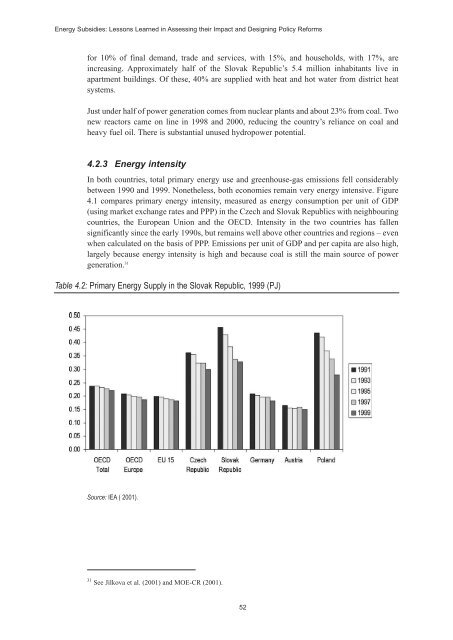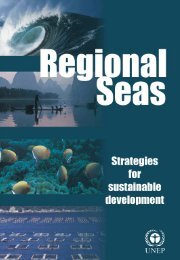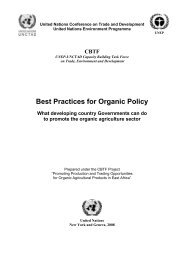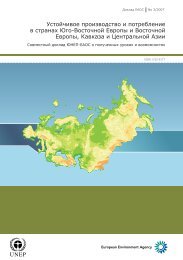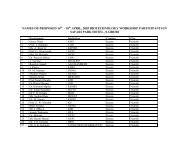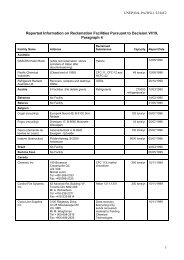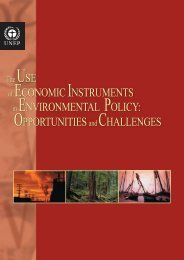Energy Subsidies: Lessons Learned in Assessing their Impact - UNEP
Energy Subsidies: Lessons Learned in Assessing their Impact - UNEP
Energy Subsidies: Lessons Learned in Assessing their Impact - UNEP
Create successful ePaper yourself
Turn your PDF publications into a flip-book with our unique Google optimized e-Paper software.
<strong>Energy</strong> <strong>Subsidies</strong>: <strong>Lessons</strong> <strong>Learned</strong> <strong>in</strong> Assess<strong>in</strong>g <strong>their</strong> <strong>Impact</strong> and Design<strong>in</strong>g Policy Reforms<br />
for 10% of f<strong>in</strong>al demand, trade and services, with 15%, and households, with 17%, are<br />
<strong>in</strong>creas<strong>in</strong>g. Approximately half of the Slovak Republic’s 5.4 million <strong>in</strong>habitants live <strong>in</strong><br />
apartment build<strong>in</strong>gs. Of these, 40% are supplied with heat and hot water from district heat<br />
systems.<br />
Just under half of power generation comes from nuclear plants and about 23% from coal. Two<br />
new reactors came on l<strong>in</strong>e <strong>in</strong> 1998 and 2000, reduc<strong>in</strong>g the country’s reliance on coal and<br />
heavy fuel oil. There is substantial unused hydropower potential.<br />
4.2.3 <strong>Energy</strong> <strong>in</strong>tensity<br />
In both countries, total primary energy use and greenhouse-gas emissions fell considerably<br />
between 1990 and 1999. Nonetheless, both economies rema<strong>in</strong> very energy <strong>in</strong>tensive. Figure<br />
4.1 compares primary energy <strong>in</strong>tensity, measured as energy consumption per unit of GDP<br />
(us<strong>in</strong>g market exchange rates and PPP) <strong>in</strong> the Czech and Slovak Republics with neighbour<strong>in</strong>g<br />
countries, the European Union and the OECD. Intensity <strong>in</strong> the two countries has fallen<br />
significantly s<strong>in</strong>ce the early 1990s, but rema<strong>in</strong>s well above other countries and regions – even<br />
when calculated on the basis of PPP. Emissions per unit of GDP and per capita are also high,<br />
largely because energy <strong>in</strong>tensity is high and because coal is still the ma<strong>in</strong> source of power<br />
generation. 31 52<br />
Table 4.2: Primary <strong>Energy</strong> Supply <strong>in</strong> the Slovak Republic, 1999 (PJ)<br />
Source: IEA ( 2001).<br />
31 See Jilkova et al. (2001) and MOE-CR (2001).


